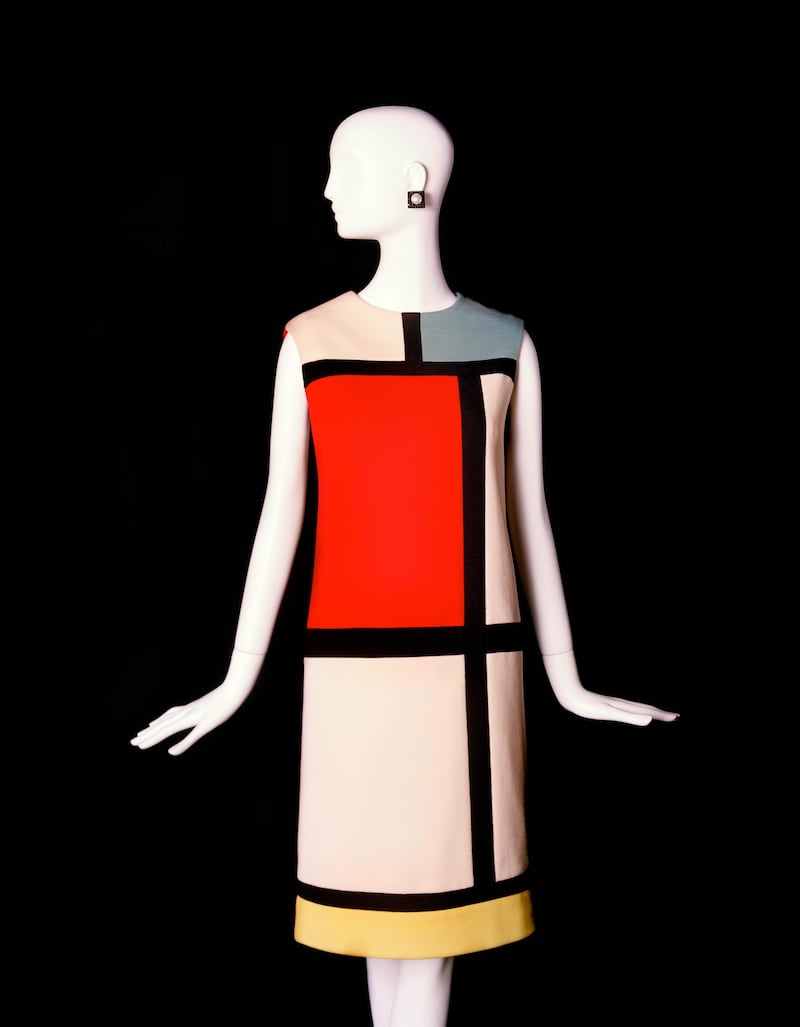This month marks the opening of not one but two museums dedicated to the work of French fashion designer Yves Saint Laurent. Musée Yves Saint Laurent Paris opened on Avenue Marceau in the French capital earlier this week, while Musée Yves Saint Laurent Marrakech is set to open on October 19, in acknowledgement of the fact that Morocco was the designer’s home away from home.
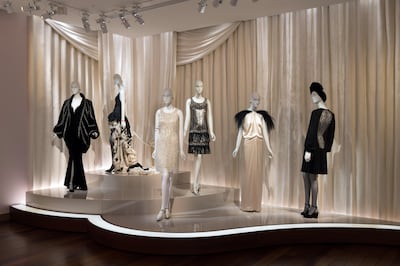
The momentum to bring both museums to fruition was spearheaded by Pierre Bergé – Saint Laurent’s partner and the man credited as the business force behind the fashion empire. Possessed of an astute business instinct, Bergé also had an unwavering belief in the genius of the designer, who he met in 1958 – the two forged a relationship that would last until Saint Laurent’s death in 2008.
Bergé often described Saint Laurent as “the greatest designer of the second half of the 20th century”, declaring that “Coco Chanel liberated women, but Yves Saint Laurent gave them power”.
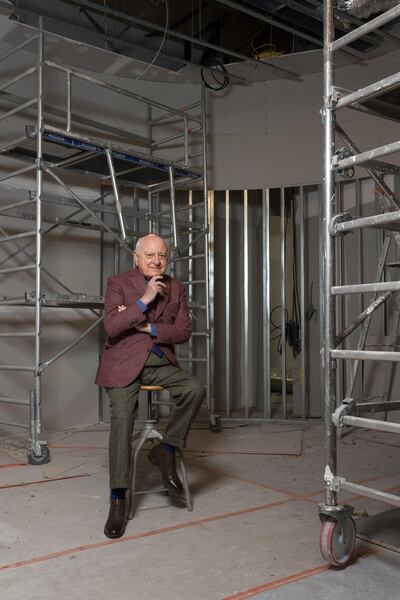
The Paris museum is housed in what was, until 2002, the home of Saint Laurent’s haute-couture label, and where he created some of his most famous and provocative pieces. A creative tour de force, Saint Laurent’s fiercely Parisian aesthetic shaped everything he touched, imbuing every shirt, dress or pair of trousers with a daring, sensual elegance. This vision came at a personal cost, however, because he was essentially a shy, timid man, plagued by debilitating, destructive depression. It was Bergé’s support, however, that seemed to not only drive the business forward, but also coax the designer through some of his darkest periods.
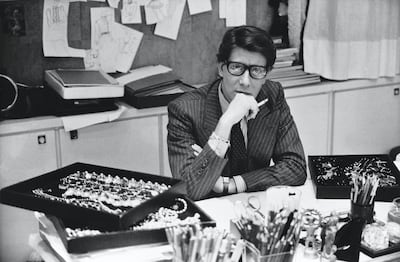
A precocious talent, Saint Laurent burst onto the fashion scene in 1954 when, at 18, he won the Woolmark Prize (as did, in the same year, Karl Lagerfeld). Intelligent, fragile and blessed with a rare talent and physical beauty, Saint Laurent quickly became the darling of the industry. Hand-picked by Christian Dior to join his studio, he became the logical choice to take over as creative director when Dior suddenly passed away in 1957. At the time, Saint Laurent was 21.
The single-minded vision that had initially made Saint Laurent’s work so exciting, however, was soon at loggerheads with Dior’s conservative management, and three years later, he was dismissed. This spectacular fall from grace, from prodigy to outcast, sent the already frail young man spiralling into despair.
The abrupt departure from Dior, however, proved a turning point for Saint Laurent. Now that the designer was a free entity, Bergé was able to persuade him to set up his own label, which led to the launch of Yves Saint Laurent Haute Couture in 1961.
Like Chanel before him, Saint Laurent’s instincts were spot on and totally in step with the mood of his time. When he unveiled his Mondrian dress in 1965, the trapeze cut, which hung away from the body and was splashed with the work of an artist, was totally unlike the restrictive, conservative clothes of the day.
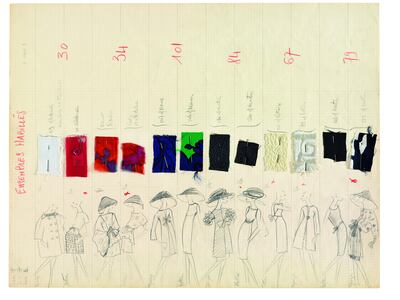
The following year, he looked to men’s tailoring for inspiration, creating the now-iconic Le Smoking tuxedo suit. Although widely criticised at the time, his reimagined suit, cut to perfectly emphasise the female form, with lean lines to lengthen legs and neck, was a breakthrough. Created in response to the little black dress, it threw open ideas of what women could, and should, wear.
“A woman in a pantsuit is not masculine at all,” Saint Laurent said in a rare interview in 2003. “A severe and implacable cut only emphasises her femininity, her seductiveness, all the more. I had noticed men were much more confident in their clothes. So I sought through trouser suits, trench coats, tuxedos and pea coats to give women the same confidence.”
Le Smoking became a symbol of chic rebellion, and was adopted by strong, vocal women such as Lauren Bacall, Liza Minnelli, Catherine Deneuve and Bianca Jagger, who caused a scandal when she wore a white version – sans a shirt – for her wedding to Mick Jagger. The garment gained further notoriety when New York socialite Nan Kempner, when denied entry to a restaurant, responded by taking off her trousers to comply with the dress code. This prompted Saint Laurent to lengthen the jacket into a minidress the following season.
Nineteen sixty-six also saw Yves Saint Laurent’s launch a ready-to-wear label – becoming the first high-end company to do so. Named Rive Gauche, after the Left Bank of Paris, which was synonymous with youth and spirited daring, it made Saint Laurent a household name.
In the next few years, the designer’s output was astonishing, fearlessly rewriting the rules at every turn. He reimagined a man’s safari suit for women, and dressed women in sheer, translucent blouses, offering them sexually charged but exquisitely executed clothes.
Such revolutionary verve took its toll on Saint Laurent's fragile health, however, and he increasingly fled to Marrakech to hide, leaving Bergé to try to coax him back to Paris and work.
In 1999, the decision was made to sell the ready-to-wear line to the Gucci Group (now Kering), which installed Tom Ford as head designer, but to keep haute couture under Saint Laurent’s control.
Even this eventually proved too much. By 2002, Saint Laurent’s mental and physical health had declined dramatically, and the clearly frail designer announced his retirement. His last-ever haute-couture show was a tearful homage to Le Smoking and the heady days of the past.
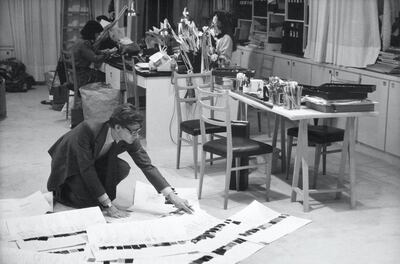
In 2004, the same Avenue Marceau building that had been the design studio and atelier for haute couture for more than 30 years was turned into the headquarters for Fondation Pierre Bergé-Yves Saint Laurent, the establishment created by Bergé to document and preserve all of Saint Laurent’s work. For years, both men had obsessively kept every element of the collections, from preparatory sketches and swatches to final runway looks, and Saint Laurent had hand-marked the labels of his favourite pieces as “M” for museum. As the foundation’s base, the building housed the offices of both Bergé and Saint Laurent, as well as an archive of more than 5,000 original pieces.
In 2008, Saint Laurent’s death seemed to propel Bergé even harder to create a permanent space in his partner’s honour. In 2015, in recognition of his immense contribution, Bergé was awarded the Grand Officier of the Ordre National de la Légion d’Honneur by then French president François Hollande. The following year, he received the Grand Cross of the Order of Ouissam Alaouite from the King of Morocco.
Now, after an 18-month redesign and restoration, the Avenue Marceau base has been turned into the museum both men so desperately wanted, with the interior design echoing its day as a house of couture, with all the exhibits taken from the archives.
The building now houses a permanent collection, along with temporary galleries with exhibitions that will rotate between Paris and Marrakech. On show is the famous Mondrian dress, Cossack coats from the 1976 Ballets Russes collection, and the Van Gogh collection of 1988. Saint Laurent’s salon, too, has been recreated, including the vast mirror that allowed the designer to see a piece from every angle. It is here that he would often work, pinning fabric directly onto a live model. The reception room – where ladies would wait to see the designer – has been restored, while the upper part of the building now houses themed galleries that explore narratives in his work.
Pride of place in the heart of the museum, however, is Saint Laurent’s office, painstakingly recreated with piles of books, sketches and pots of blue pencils, as if he has just stepped away for a moment. Surrounded by photographs of the many women he designed for, it is a timely reminder of how interconnected and instrumental to French society he was. The house is decorated with much of the art that once decorated the designer’s home, including a portrait by Andy Warhol.
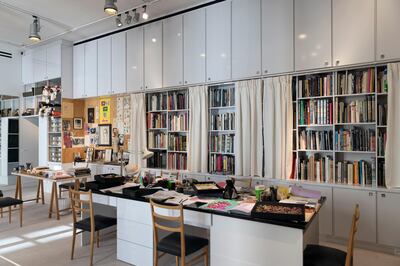
The inauguration itself – prior to its public opening – was attended by the French minister of culture Françoise Nyssen, Salma Hayek and her husband François-Henri Pinault, Kering chairperson Charlotte Casiraghi, Jean-Paul Gaultier and lifelong devotee Deneuve.
Also in attendance was Anthony Vaccarello, the new creative director for Saint Laurent, the only designer for the company of whom Bergé actually approved. Vocal in his dislike of previous designers (including Tom Ford and Hedi Slimane), Bergé sat front row for Vaccarello.
The one person missing from the inauguration was the most instrumental to its creation – Bergé passed away three weeks before the opening. Vaccarello dedicated the spring/summer Saint Laurent show to him during Paris Fashion Week.
Having preserved Saint Laurent’s collection since 1964, Bergé, one would think, would be delighted with the two new museums he worked so tirelessly to set up. That the two edifices are named for Saint Laurent alone is a bit of a misnomer, because without Bergé, neither the museums, nor the now-legendary designer whose work fills them, would have existed. A brilliant but fragile genius, Saint Laurent was propelled into becoming a world-famous designer by Bergé, whose drive, energy and ceaseless work held the crumbling, chaotic pieces together.
Saint Laurent once declared: “I created the contemporary woman’s wardrobe.” Indeed he may have, but likewise, Bergé could have boasted that he created Yves Saint Laurent.
________________
Read more:
[ MoMA celebrates fashion items that have shaped our world ]
[ Yves Saint Laurent's Marrakech connections ]
________________
